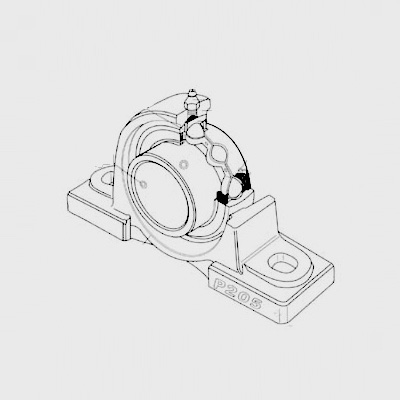
Jul . 29, 2024 04:01 Back to list
Exploring the Performance and Applications of Deep Groove Ball Bearings in Modern Machinery
Understanding Deep Groove Bearings An Essential Component in Modern Machinery
Deep groove bearings are one of the most widely used types of rolling bearings, renowned for their versatile application in various machinery and equipment. These bearings are designed to support both radial and axial loads, making them ideal for diverse operational environments. Understanding their design, functionality, and applications is essential for engineers and manufacturers alike.
Design and Structure
Deep groove bearings are constructed with an inner and outer ring, a cage, and rolling elements, typically steel balls. The deep groove refers to the raceway design, which features deeper grooves than standard angular contact bearings. This unique configuration enables the balls to accommodate loads from multiple directions, thus enhancing the bearing's performance.
The geometry of deep groove bearings allows them to provide a larger contact surface with the rolling elements, which significantly reduces stress concentrations. As a result, these bearings can handle heavier loads and operate at higher speeds compared to other types of bearings. They are available in various sizes, materials, and configurations, such as shielded or sealed variants, to suit specific applications.
Functionality
The primary function of deep groove bearings is to minimize friction between the moving parts in machinery. When a shaft rotates, the rolling elements within the bearing roll between the inner and outer rings, effectively distributing the load and allowing smooth rotation. This reduction of friction not only prolongs the life of mechanical components but also enhances the efficiency of machinery.
deep groove bearing

Moreover, deep groove bearings can operate effectively in challenging conditions, such as high temperatures, moisture, and dirt. The use of seals or shields protects the internal components from contamination, further extending their operational lifespan. This reliability makes them a popular choice in applications where maintenance access is limited or challenging.
Applications
Deep groove bearings are employed in a myriad of applications across numerous industries. They are fundamental components in electric motors, automotive transmissions, pumps, and industrial machinery. For instance, in electric motors, deep groove bearings help reduce energy consumption and enhance performance, ensuring that motors operate smoothly and effectively.
In the automotive sector, these bearings play a critical role in wheel hubs, gearbox assemblies, and steering mechanisms. Their ability to support both radial and axial loads makes them indispensable in providing stability and safety in vehicles. Additionally, deep groove bearings are used in household appliances, such as washing machines and refrigerators, showcasing their versatility.
Furthermore, the aerospace industry utilizes these bearings in various applications, where precision and reliability are paramount. The ability to perform under extreme conditions while maintaining functionality makes deep groove bearings an ideal choice for such demanding applications.
Conclusion
In summary, deep groove bearings are integral to the functionality of countless machines and devices. Their robust design, efficiency in load handling, and adaptability to various environments ensure their continued relevance in modern engineering. As technology advances, so too will the innovations in bearing design, but the fundamental principles of deep groove bearings will remain a cornerstone of mechanical reliability and performance. Understanding their function and application is vital for engineers and designers, as these crucial components will continue to play a key role in shaping the future of machinery and industrial applications.
Latest news
-
Common Failures in Thrust Ball Bearings and Solutions
NewsAug.22,2025
-
How Tapered Roller Bearings Can Take Shock Loads
NewsAug.22,2025
-
Angular Bearings in High-Precision Spindles
NewsAug.22,2025
-
The Impact of Misalignment on Cylindrical Roller Bearing Performance
NewsAug.22,2025
-
The Role of Cage Design in Deep Groove Ball Bearing Durability
NewsAug.22,2025
-
The Impact of Material Quality on Machinery Bearings’ Lifespan
NewsAug.22,2025
